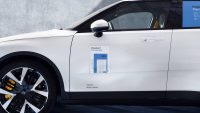 IT’S easy to think of the world of online marketing as a series of hurdles; a number of distinct areas, all of which one has to understand in order to carve out an integrated marketing strategy that’ll draw customers to your dealership.
IT’S easy to think of the world of online marketing as a series of hurdles; a number of distinct areas, all of which one has to understand in order to carve out an integrated marketing strategy that’ll draw customers to your dealership.
But while many digital marketing specialists will work around this concept, GForces considers its approach to be a little different. Rather than offering a series of piecemeal marketing solutions, GForces instead offers to develop and refine a complete and interdependent strategy that balances its client’s budget and allocates it to the areas which return the optimum results.
‘The reality is, where I think the best digital marketing companies operate, is not just generating more visitors to websites,’ says Tim Smith, the company’s commercial director. ‘A lot of what we do is to balance out an entire digital marketing budget, not only with attracting a volume of visitors to a website, but also qualifying those visitors, and therefore improving the chances of converting them into a sales opportunity.’
It’s in this holistic, all-encompassing way that GForces works for its clients. ‘We call our package “Total Digital Marketing”,’ Smith explains. ‘The first thing we do is to isolate the dealer’s goals – “I want to drive new car sales by X”; “I want to increase my used car penetration by Y”; “I want to have Z service bookings a month”. We take those priorities, look at the budget, and work out how we can split that budget – and use our techniques and technology – to achieve those individual goals.
‘In very broad brush strokes, the idea is that we balance all of these elements out dependent upon the requisite business goals. It’s far more advanced than just trying to drive visitors to the website – which is an approach that’s still, unfortunately, quite prevalent in the industry.’
The process, Smith says, often starts with social media – potentially even before a customer is seriously thinking about buying a new car. ‘Social media opens up businesses to more of a free flow of information than ever before. It operates at a different level in the sales process; in an awareness phase – while people have the sentiment to buy a car. The decision-making process is not fully formed; at that stage, they’re just gathering pre- research information. But social media also has an impact on search results. Search still dominates the landscape in terms of driving value-for-money in marketing, and social media is now being included in the algorithms that Google uses.’
Indeed, getting the approach to search right – perhaps through pay-per-click advertising, or more commonly, through good SEO – is still one of the most important parts of an online marketing strategy.
‘When the consumer goes into the research phase, they typically hit all the standard tools – so they’ll go on to search engines, they’ll look for consumer reviews, they’ll browse classifieds, and they’ll review the market,’ says Smith. ‘The bulk of a dealer’s sales opportunities will be generated through natural search – and in the UK, that’s predominantly through Google. The other thing you can look at is how you run your paid search – so you may use specific landing pages, or you might drive the traffic back to the website.
‘But with our clients who are on a mature digital marketing strategy, generally 55-65 per cent of their leads are generated through natural search, which is where SEO comes in. And obviously a huge amount of that is then filtered through the website – so we have to make much more of what customers do once they’re there.
‘They need to be engaged, they need to get the information they want, and they need to be prompted to make a call to action – send an email, get involved in a live chat, or make a phone call. A dealer’s website still counts for, by far and away, the largest number of leads that they generate for their business.’
As important as those other factors are, then, Smith says it’s the website that’s the cornerstone of a digital marketing strategy.
‘For GForces, there are three components,’ he explains. ‘We call them Platform, Management and Marketing. Your platform is the website – your web assets, your digital tool set. And until you get a solid platform, you’re just throwing good money after bad. You can go out and do your marketing, and get your visitors onto the website, but if the platform’s not stable, robust, and well-designed, you’re burning those visitors because it isn’t fit for purpose, and your conversion rate will be low.
‘Once you’ve done that, the next phase – which is so often neglected it’s untrue – is management. That means having the right people and support structure around that digital strategy. Working out who’s going to answer live chat, for example; where your emails are being distributed; how quickly you’re responding to the leads that are generated by this online beast; how much your guys know about marketing – and why all these things are relevant. Education within the dealership, in other words – because that information, that teaching, that learning, gives the customer the currency to develop with a digital agency.
‘You can then look at marketing. Because you can go out to market and spend lots of money, safe in the knowledge that these opportunities you’re creating will return sales – that they’ll be converted through the business. So you get those three components, and again it comes down to this balance.’
That word – balance – seems to be woven through this company’s business. GForces considers the rocketing proliferation of different technologies involved in digital marketing, and ties them together in a coherent, organised strategy with the aim of meeting a dealer’s prime targets.
‘Total Digital Marketing is the next evolutionary step of online marketing,’ says Smith, in summary. ‘It acknowledges the fact that all forms of internet marketing have an impact on each other. The genesis of search, changing consumer behaviour, and all forms of digital marketing need to work symbiotically as if part of the same highly complex organism – rather than a bunch of separate cells with competing agendas.’

































